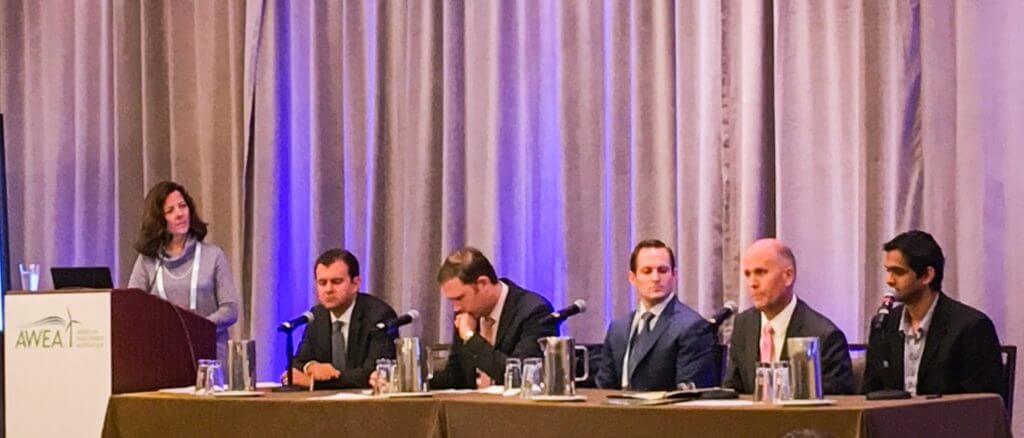
You might expect wind industry executives at last week’s AWEA Wind Energy Finance & Investment Conference 2016 in New York to talk enthusiastically about the transition to clean energy. But over the last year, utility companies and Independent Power Producers (IPPs) have joined them – proclaiming that that the clean energy future has arrived now – much sooner than any of us thought possible.
What’s driving this? First, in much of the US it now costs more to generate additional electricity by burning more fossil fuel in existing plants than it does to buy it from a new utility-scale onshore wind or solar PV farm. This is a result of steady policy support and steep cost reductions in solar and wind costs.
But another, less well-known driver is that the millennial generation – the largest generation in US history, even bigger than the Baby Boomers – wants renewable energy. Utilities and IPPs point to surveys that indicate a strong demand pull from millennials as their emerging customer base with a strong desire to get off coal. Millennials want their electric vehicle, or better still car share vehicle, to be powered by the sun and wind, not millennia-old carbon.
For the renewables industry, it’s a perfect storm. But one of the challenges the industry now faces is to figure out how it can finance all that new generation in a market with low costs of generation, low demand growth, falling prices, and subsidies that are scheduled to phase out over the next decade.
The only way this can happen is if costs can keep falling.
One way this could happen is through continued technological progress. Last month, researchers at the National Renewable Energy Laboratory and the Lawrence Berkeley National Laboratory published their forecast for a 24%-30% drop in the Levelized Cost of Electricity for wind by 2030 and a 35%-41% drop by 2050.
But we think the decrease in costs could be even more dramatic than that with new financing instruments that could reduce the cost of financing by 20%, which in turn will accelerate those LCOE reductions.
Over the past year, we have been working with investors on such an instrument as part of a program funded by the Rockefeller Foundation. Despite the volatility YieldCos experienced last year, we believe there is a new model that can salvage the positive elements of this design, while restoring a much closer link to the cash flows of the underlying renewable assets.
The new instruments – Clean Energy Investment Trust (CEITs) – will still be publicly traded listed vehicles, but instead of a growing portfolio of assets, each CEIT will consist of a fixed portfolio of assets generating reliable cash flows over the life of the vehicle. A closed pool of assets, the CEIT would offer a fixed income-like return profile that would be more sustainable over the long term but at a level somewhat higher than currently available on investment grade bonds.
 Last week, I spoke about CEITs during an AWEA conference panel moderated by Susan Nickey at Hannon Armstrong who led the introduction of Real Estate Investment Trust (REITs), a market now worth $1.8 trillion in the US.
Last week, I spoke about CEITs during an AWEA conference panel moderated by Susan Nickey at Hannon Armstrong who led the introduction of Real Estate Investment Trust (REITs), a market now worth $1.8 trillion in the US.We’re hoping for a similarly transformational impact from pension funds and insurers looking to match their investments with their long-term liabilities. Our analysis shows that US-wide, a 10% reduction in Power Purchase Agreement prices would allow wind to economically displace an additional 30.5GW of mostly coal generation and 154.5 million tons of CO2 – equivalent to taking 28.2 million cars off the road.
CPI Energy Finance’s executive director, David Nelson, will this week present some of our work on CEITs so far to an audience of institutional investors – pension funds, life insurance companies – at the IPE Real Assets & Infrastructure Investment Strategies Conference in London. We will also be publishing several reports on CEIT structure and market potential by the end of the year, the first of which you can read here.
Pensions and life insurance policies are probably the furthest thing from the minds of Millennials, many of whom are just now coming of age and entering the job market. But their expectations about the world they want to live in and actions to mitigate climate change are driving a transformation in energy that will benefit not only their generation, but those that follow them.

